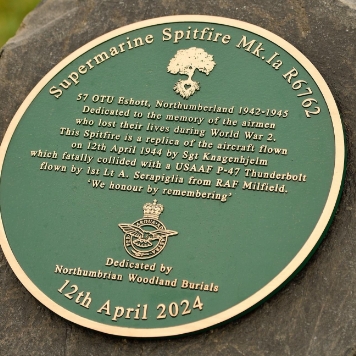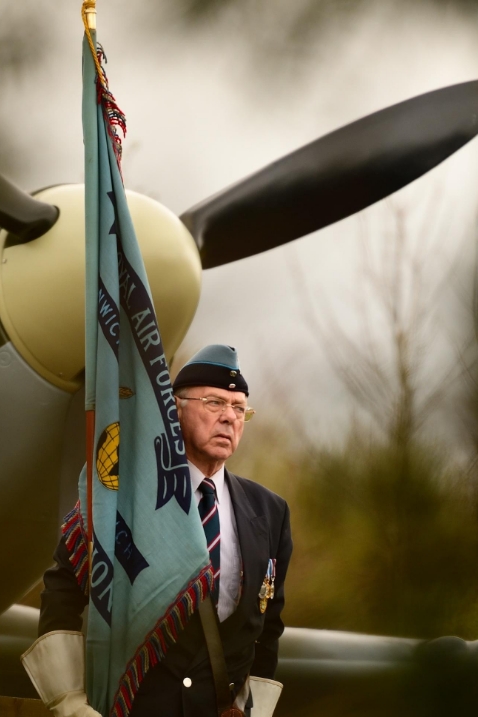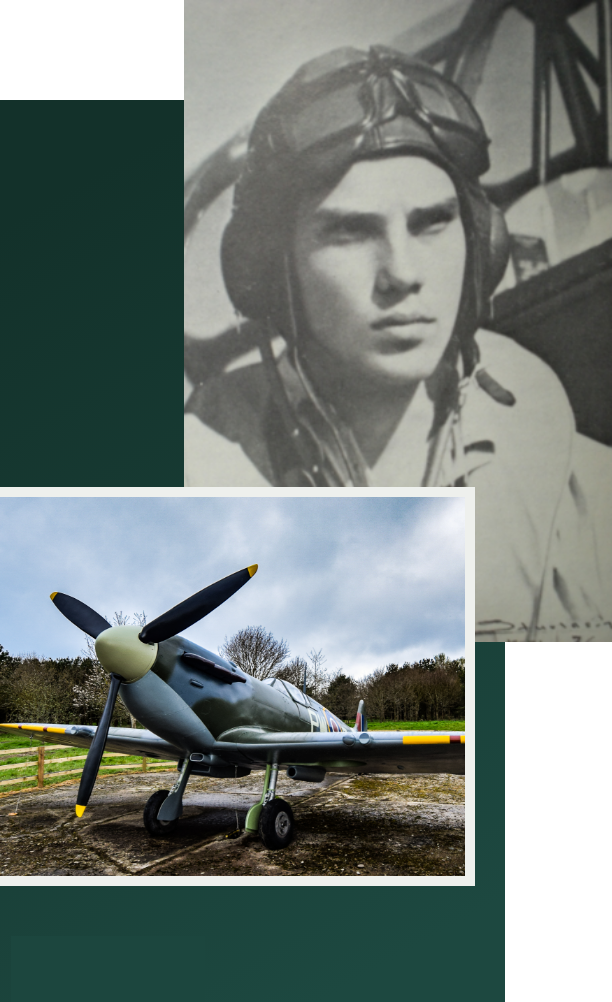

Supermarine Spitfire Mk IA R6762 was part of 57 Operational Training Unit at Eshott, training pilots during World War II.
19 year old Sergeant Knagenhjelm, and Thunderbolt pilot First Lieutenant Anthony Serapiglia both died in the collision. The replica of the iconic war bird was unveiled in it’s new home at Northumberland Woodland Burial and Crematorium, on Friday 12 April, during a special Memorial Ceremony.
The site is part of what was once RAF Eshott, with the replica being placed on one of the former Spitfire concrete tie downs.
On the fateful day, Sergeant Knagenhjelm had been carrying out practice attacks with a fellow Spitfire pilot above 5,000 feet for 30 minutes then completing further aerobatics above 8,000 feet. On returning to RAF Eshott, Sergeant Knagenhjelm was in a circuit awaiting instructions to land. First Lieutenant Serapiglia from the Air Force based at RAF Milfield had disobeyed orders and was flying in the opposite direction, colliding head on with the Spitfire.
Entering a flat spin, R6726 was ablaze and crashed at Blawearie Field at Eshott Home Farm. The stricken Thunderbold lost a wing, burst into flames and spun to the ground south of Eshott Airfield.
At Northumberland Woodland Burials and Crematorium, we’re incredibly proud of our Northumbrian heritage. We felt it was really important to honour the memory of those that served here. It’s our great privilege to have a replica of R6762 to not only commemorate Sergeant Knagenhjelm and First Lieutenant Serapiglia, but all those that served during the war.
By having the Spitfire here, we can offer a memorial space for people to reflect and it will be particularly important for those who wish to remember a loved one who served in any branch of the military.
During the unveiling ceremony Durham Northumberland Wing RAF Air Cadets performed a commemorative parade followed by a few words from Sarah Price and Margaret Weaver Lay Minister of St John the Divine Church, Chevington.
Joining the ceremony where Royal Air Forces Association with standard bearers from Northumbria, Gateshead and Newcastle Branches. Wing Comanders of 19 and 20 Squadrons from RAF Boulmer were also in attendance with representatives from the Norwegian Air Force and US Military Air Force Exchange.
The original Supermarine Spitfire Mk Ia R6726 was built at Eastleigh, Southampton and first flew on 16 June 1940. R6762 was the first Spitfire equipped with cannon to see service with the RAF. R6762 served with 19 Squadron at Fowlmere, Cambridgeshire, 222 Squadron, Hornchurch and 53 Operational Training Unit Heston, Middlesex before moving to RAF Llandow in 1941 and finally to 57 Operational Training Unit, Eshott on 27 April 1943.
The replica was built by Replica Aircraft Fabrications Limited and made the 450 mile journey to its final resting place at Northumberland Woodland Burials and Crematorium.
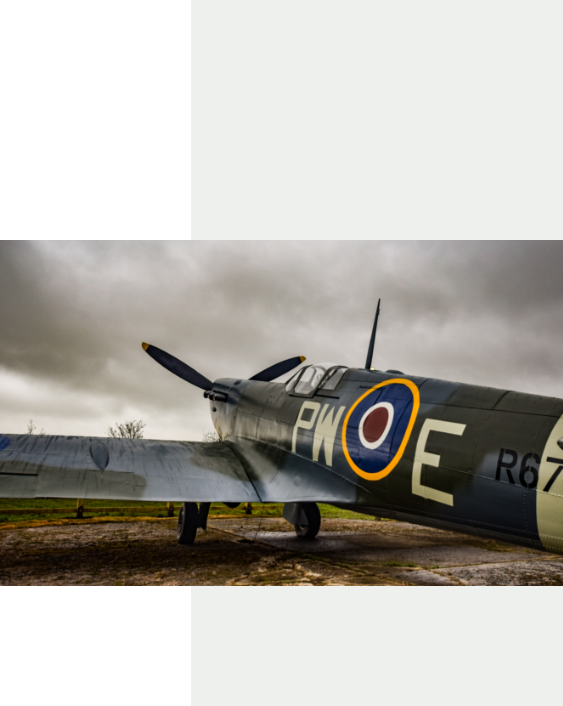
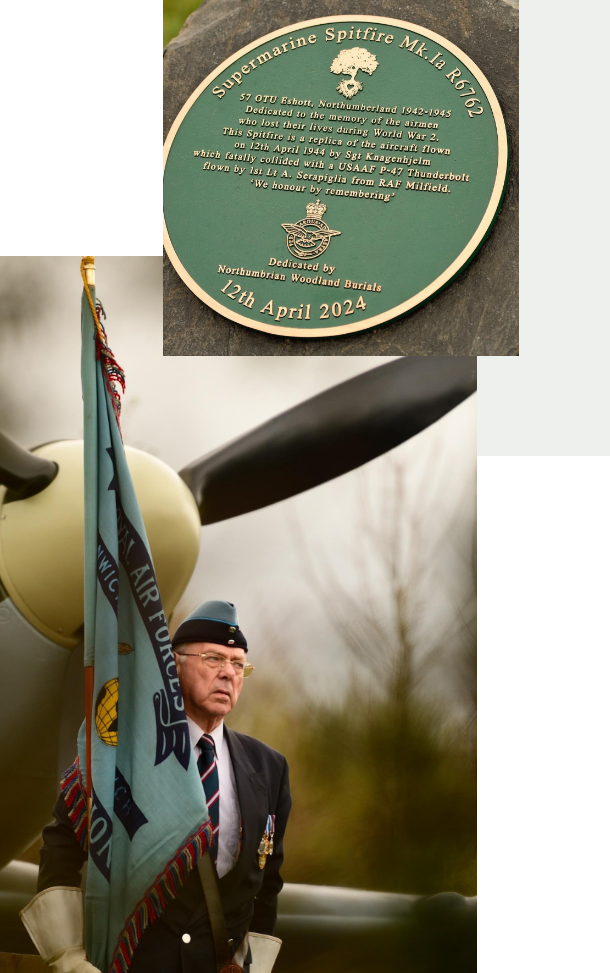
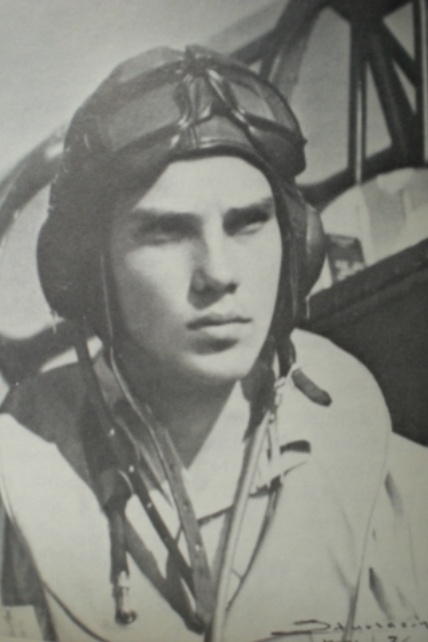

Watch our dedicated short film or read below to learn more about the history of this particular aircraft and its significance to our site.
Supermarine Spitfire Mk IA R6762 was part of 57 Operational Training Unit at Eshott, training pilots during World War II.
19 year old Sergeant Knagenhjelm, and Thunderbolt pilot First Lieutenant Anthony Serapiglia both died in the collision. The replica of the iconic war bird was unveiled in it’s new home at Northumberland Woodland Burial and Crematorium, on Friday 12 April, during a special Memorial Ceremony.
The site is part of what was once RAF Eshott, with the replica being placed on one of the former Spitfire concrete tie downs.
On the fateful day, Sergeant Knagenhjelm had been carrying out practice attacks with a fellow Spitfire pilot above 5,000 feet for 30 minutes then completing further aerobatics above 8,000 feet. On returning to RAF Eshott, Sergeant Knagenhjelm was in a circuit awaiting instructions to land. First Lieutenant Serapiglia from the Air Force based at RAF Milfield had disobeyed orders and was flying in the opposite direction, colliding head on with the Spitfire.
Entering a flat spin, R6726 was ablaze and crashed at Blawearie Field at Eshott Home Farm. The stricken Thunderbold lost a wing, burst into flames and spun to the ground south of Eshott Airfield.
At Northumberland Woodland Burials and Crematorium, we’re incredibly proud of our Northumbrian heritage. We felt it was really important to honour the memory of those that served here. It’s our great privilege to have a replica of R6762 to not only commemorate Sergeant Knagenhjelm and First Lieutenant Serapiglia, but all those that served during the war.
By having the Spitfire here, we can offer a memorial space for people to reflect and it will be particularly important for those who wish to remember a loved one who served in any branch of the military.
During the unveiling ceremony Durham Northumberland Wing RAF Air Cadets performed a commemorative parade followed by a few words from Sarah Price and Margaret Weaver Lay Minister of St John the Divine Church, Chevington.
Joining the ceremony where Royal Air Forces Association with standard bearers from Northumbria, Gateshead and Newcastle Branches. Wing Comanders of 19 and 20 Squadrons from RAF Boulmer were also in attendance with representatives from the Norwegian Air Force and US Military Air Force Exchange.
The original Supermarine Spitfire Mk Ia R6726 was built at Eastleigh, Southampton and first flew on 16 June 1940. R6762 was the first Spitfire equipped with cannon to see service with the RAF. R6762 served with 19 Squadron at Fowlmere, Cambridgeshire, 222 Squadron, Hornchurch and 53 Operational Training Unit Heston, Middlesex before moving to RAF Llandow in 1941 and finally to 57 Operational Training Unit, Eshott on 27 April 1943.
The replica was built by Replica Aircraft Fabrications Limited and made the 450 mile journey to its final resting place at Northumberland Woodland Burials and Crematorium.
